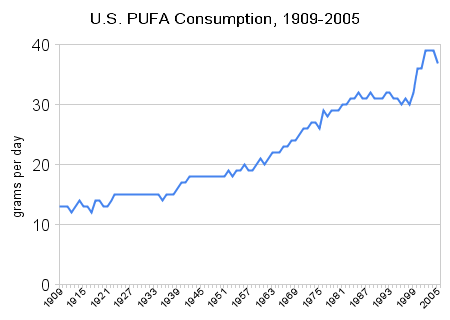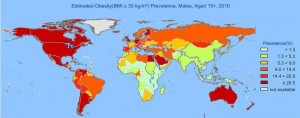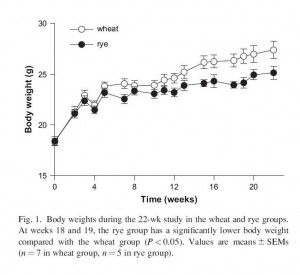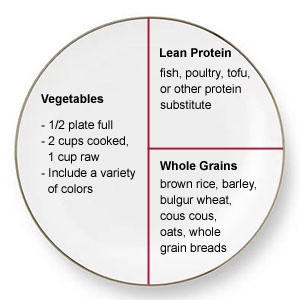In the book we discuss the issue of omega-3 toxicity (pp 56-58, 71-72), why it is most dangerous when omega-3 fats are combined with alcohol or fructose, and why fish oil capsules are particularly dangerous (see Fish, Not Fish Oil Capsules, June 16, 2010).
We recommend eating about 1 pound per week of omega-3 rich marine fish, like salmon, sardines, or herring, but taking no omega-3 supplements. This amount is sufficient to optimize the tissue omega-6 to omega-3 ratio for cardiovascular health, and is not so great as to raise great risks of toxicity. We also recommend avoiding mixing omega-3 fats with sugar or alcohol – a point I reiterated in last week’s post (How to Raise HDL, April 20, 2011):
Drink alcoholic beverages – but only when consuming meals low in polyunsaturated fats. Drink up when you eat beef, but be cautious when the entrée is salmon.
Some new papers have recently come out on the subject of omega-3 toxicity, and may lead some in the Paleo community, possibly including us, to reconsider our advice about omega-3 fats.
High Omega-3 Intakes in the Paleo Community
Our 1 pound fish per week recommendation works out to about 1.5 g omega-3 fats per day. But some Paleo authorities recommend much higher intakes.
Various emailers and commenters have mentioned Robb Wolf’s recommendations. Beth summarized Robb’s advice:
Robb Wolf promotes a short period of hefty omega 3 supplementation for unhealthy folks — on the order of 1g/10lbs of body weight per day.
Which would work out to 18 g/day for me, about 12-fold more than we recommend. Of course, if this is only for a short period, it may not be a big deal. However, I know from emails that some people take large doses continuously. Here’s one of my emailers:
Supplements are 10g of fishoil – 3.5g of epa/dha …
Bit surprised about [recommendation to reduce] the Fish oil, since i’m on the very low end of what other people are recommending, for fat loss as well, ie. robb wolf, poliquin etc.
The Whole9 folks host a Robb Wolf fish oil calculator which recommends that a 180-pound man take 4.5 g EPA+DHA per day. Depending on whether it is accompanied by other omega-3 fats in fish oil, this could be anywhere from 3 to 10 times our recommended intake, and is in line with what my emailer was taking.
Some Known Consequences of Omega-3 Excess
What are the likely consequences of omega-3 toxicity?
The obvious dangers are those related to oxidative stress from lipid peroxidation. The concern with omega-3 fats is not direct toxicity, but toxicity from their oxidation products. Omega-3 fats have a lot of fragile carbon double bonds which are easily oxidized: EPA has 5 double bonds and DHA 6. These are therefore among the most fragile lipids in the human body.
We would expect such problems to show up primarily in the liver and in the nervous system, where EPA and DHA levels are highest.
Indeed, they do. In mice, high dietary omega-3, in conjunction with alcohol or sugar, induces fatty liver disease. [1] In pregnant rats, excessive doses of omega-3 fats cause offspring to have shortened life span and neural degeneration. The authors concluded, “both over- and under-supplementation with omega-3 FA can harm offspring development.” [2]
However, there are associations of high omega-3 intake with disease in other tissues. In particular, emerging work is linking high omega-3 intake to diseases of pathological angiogenesis.
Angiogenesis is the creation of new blood vessels in mature tissue. (Vasculogenesis is the creation of vessels in a developing embryo.) It is a normal part of wound healing, but over a dozen diseases feature inappropriate angiogenesis.
Omega-3 Intake Is Usually Anti-Angiogenic
Before I go further, let me emphasize that nothing I am saying here repudiates the idea that it is desirable to bring tissue omega-6 and omega-3 fats into proper balance.
There are many studies showing that when tissue omega-6 to omega-3 ratios are too high, as on the standard American diet (SAD), additional omega-3 DHA and EPA can improve the omega-6 to omega-3 balance, reduce inflammatory signaling, and through reduced inflammation exercise an anti-angiogenic effect.
The mechanisms linking the anti-angiogenic effects of omega-3 to a condition of omega-6 excess are fairly well understood. Here is one description of the mechanism:
Here, we demonstrate that omega-6 PUFAs stimulate and omega-3 PUFAs inhibit major proangiogenic processes in human endothelial cells, including the induction of angiopoietin-2 (Ang2) and matrix metalloprotease-9, endothelial invasion, and tube formation, that are usually activated by the major omega-6 PUFA arachidonic acid. The cyclooxygenase (COX)-mediated conversion of PUFAs to prostanoid derivatives participated in modulation of the expression of Ang2. Thus, the omega-6 PUFA-derived prostaglandin E2 augmented, whereas the omega-3 PUFA-derived prostaglandin E3 suppressed the induction of Ang2 by growth factors. Our findings are consistent with the suggestion that PUFAs undergo biotransformation by COX-2 to lipid mediators that modulate tumor angiogenesis, which provides new insight into the beneficial effects of omega-3 PUFAs. [3]
So the question at issue is not whether omega-6 and omega-3 balance needs to be achieved. Rather, two points are at issue:
(a) At what level of polyunsaturated (and omega-3) fat intake should balance be achieved – high or low?
(b) Does overshooting toward an omega-3 excess generate significant or insignificant dangers?
If omega-3 toxicity is significant, then it will be important to achieve balance at low intakes of both omega-6 and omega-3, and to be careful to avoid overshooting to an omega-3 excess.
New Paper: DHA Linked to Cancer Progression
A new paper, just published yesterday, from “the largest study ever to examine the association of dietary fats and prostate cancer risk” has linked blood DHA levels to cancer risk. Specifically:
Docosahexaenoic acid was positively associated with high-grade disease (quartile 4 vs. 1: odds ratio (OR) = 2.50, 95% confidence interval (CI): 1.34, 4.65) … [4]
This is a large effect: the highest quartile had 2.5-fold higher risk than the lowest-quartile.
That it was the omega-3 DHA specifically, and not polyunsaturated fats generally, that caused the problem, is supported by the fact that (note: edited to correct error in original post – PJ) omega-6 linoleic acid had no effect, and 18:1 and 18:2 trans-fats which are mostly obtained from partially hydrogenated vegetable oils were associated with protection against cancer:
TFA 18:1 and TFA 18:2 were linearly and inversely associated with risk of high-grade prostate cancer (quartile 4 vs. 1: TFA 18:1, OR = 0.55, 95% CI: 0.30, 0.98; TFA 18:2, OR = 0.48, 95% CI: 0.27, 0.84). [4]
People in the top trans-fat quartile had only half the risk of people in the lowest omega-6 quartile. This makes it looks like omega-6-derived trans-fats were protective.
This result conflicts with the idea that the only influence of omega-3 fats is through regulation of inflammation; if so the anti-inflammatory omega-3 would have suppressed cancer. As lead study author Theodore Brasky said in the press release:
“We were stunned to see these results and we spent a lot of time making sure the analyses were correct,” said Brasky, a postdoctoral research fellow in the Hutchinson Center’s Cancer Prevention Program. “Our findings turn what we know — or rather what we think we know — about diet, inflammation and the development of prostate cancer on its head and shine a light on the complexity of studying the association between nutrition and the risk of various chronic diseases.”
Angiogenesis A Possible Pathway
Angiogenesis is very important for cancer progression. Cancers need to form angiogenic vessels if the tumor is to be able to grow beyond about 0.5 mm (0.02 inch) in diameter.
Indeed, angiogenesis seems to be a controlling factor for cancer mortality risk. It is believed that 50% of adults over age 40, and 100% of adults over age 70, have microscopic cancers. However, most tumors never develop an ability to induce angiogenesis and thus the tumors never grow beyond 0.5 mm and cause no observable disease.
Dietary factors that promote angiogenesis favor cancer progression, and anti-angiogenic factors tend to prevent cancer progression. Diet seems to be crucial for cancer prevention. Here is a TED video by Dr. William Li discussing the link between angiogenesis, dietary influences upon angiogenesis, and cancer.
Conclusion
So far, we’ve set the stage. On Thursday I’ll discuss a mechanism by which excessive DHA intake may promote angiogenesis. If this mechanism is important, then excessive fish oil or DHA supplementation may act as a major cancer-promoting food.
UPDATE: The next post in this series: Omega-3s, Angiogenesis and Cancer: Part II
References
[1] Nanji AA et al. Dietary saturated fatty acids: a novel treatment for alcoholic liver disease. Gastroenterology. 1995 Aug;109(2):547-54. http://pmid.us/7615205.
[2] Church MW et al. Excess omega-3 fatty acid consumption by mothers during pregnancy and lactation caused shorter life span and abnormal ABRs in old adult offspring. Neurotoxicol Teratol. 2010 March – April;32(2):171-181. http://pmid.us/19818397.
[3] Szymczak M et al. Modulation of angiogenesis by omega-3 polyunsaturated fatty acids is mediated by cyclooxygenases. Blood. 2008 Apr 1;111(7):3514-21. http://pmid.us/18216296.
[4] Brasky TM et al. Serum Phospholipid Fatty Acids and Prostate Cancer Risk: Results From the Prostate Cancer Prevention Trial. Am. J. Epidemiol. April 24, 2011 DOI: 10.1093/aje/kwr027 (Will be at http://pmid.us/21518693.)


















Recent Comments